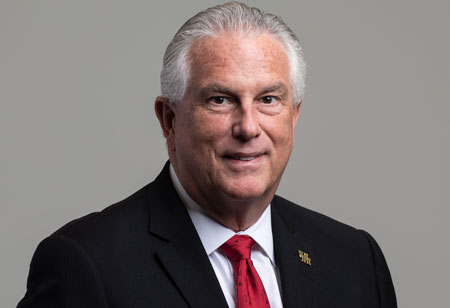There may be a “future of energy” battle raging today, illustrated by the rhetoric about global climate change and impending doom vs. the necessity to supply more energy at a competitive cost. Pick either side, and you're bound to lose. The difficulty requires a comprehensive set of solutions and can't be reduced to simplistic single-minded philosophies.
Today’s reality is that concerns about climate change are more widely accepted globally. Wind, solar and other renewable energy sources became more efficient and cost-effective, and carbon emissions are often reduced using non-fossil energy sources. At an equivalent time, because the world’s demand for energy continues to grow – largely in developing countries – we'll still use fossil fuels for decades to come. Global demand for 50% more energy over subsequent 50 years would require massive investment in renewable and technology, but that alone cannot meet global energy needs.
In fact, the utilization of fossil fuels will grow within the developing world as living standards there rise, while it's expected to decrease within the US and Europe as renewable generation provides a bigger share of power markets and efficiency gains will decrease overall electricity demand.
Any successful effort to create a more sustainable energy future would require us to require under consideration the requirements of both the developed AND developing worlds. Global population will grow from 7 to 9+ billion people in 50 years, 90% of that within the developing world. The target isn't simply to sustain fuel use but to enable the global economic process during a sustainable manner.
It’s already happening. Many of the world’s forward-thinking energy companies are taking note of the market, which wants more energy and less carbon. We can’t get where we'd like to be without their leadership, because the scale and capacity of the industry in oil and gas, petrochemicals and electrical power is critical to implementing the required transformation.
"The future isn’t about choosing the “right” technology or fuel to scale back emissions or the simplest policy to eliminate sorts of energy supply"
The challenge and alter has been driven by both innovative technologies and new policies. Global energy companies have invested in renewable energy and sustainable practices; and maybe more crucially, have begun to shift from viewing reducing emissions as another expense and a matter of regulatory compliance to brooding about it as necessary permanently business. Lower carbon practices are often accretive to shareholders and investors. that's a massively important switch, because customer demands – not governmental regulation –is becoming a primary drive.
Carbon management is no longer almost PR. Instead it's become a chance to make new, accretive and competitively advantaged low-carbon offerings that have value within the marketplace.
The U.S. Energy Information Administration and International Energy Agency have identified carbon capture, utilization and storage, or CCUS, as a key tool for CO2 mitigation. The Department of Energy has requested the National Petroleum Council to spot the roadmap required for broad commercial deployment of CCUS. An analysis of early projects already has shown the technology is not any longer a “concept,” but commercially proven.
Is CCUS good for the surroundings or good for business? Yes to both. And a supporting set of federal tax credits referred to as 45Q has been recently modified to support CCUS. The credits are often applied for pure carbon storage in safe and permanent geologies, reducing emissions and creating a revenue stream that's fungible, financeable and attractive to investors. The credits also can be applied to reinforce oil recovery (EOR) opportunities, using the CO2 to supply additional oil in mature fields, with a requirement that the CO2 then be stored within the geologic formations – measured, monitored and verified.
Two samples of CCUS in both electricity generation and boring create new offerings. With electricity generation, the technology captures CO2 from flue gases produced by coal- or natural gas-fired generation, leading to carbon-free power. Not only that, the achieving plants can operate 24/7, without requiring the wind to blow or sun to shine. It's a base load and carbon-free source of electrical power. That’s a replacement value proposition.
In boring (enhanced oil recovery, or EOR) the CO2 is injected into oil-bearing formations to supply additional recoverable oil. The life cycle inquiry of oil produced from CCUS affords a near carbon-neutral next barrel of produced oil. It’s not “more oil,” it's a competitively advantaged, lower-carbon hydrocarbon.
This is real environmental impact. Less carbon, more energy and value propositions that are attractive to consumers and investors. It's the magic of technology deployed at massive scale to make massive impact.
The future isn’t about choosing the “right” technology or fuel to scale back emissions or the simplest policy to eliminate sorts of energy supply. It must be about ensuring that we've the ability to require advantage of all sorts of energy without harm to the environment, while allowing people to enjoy the life-changing impact of affordable energy.





